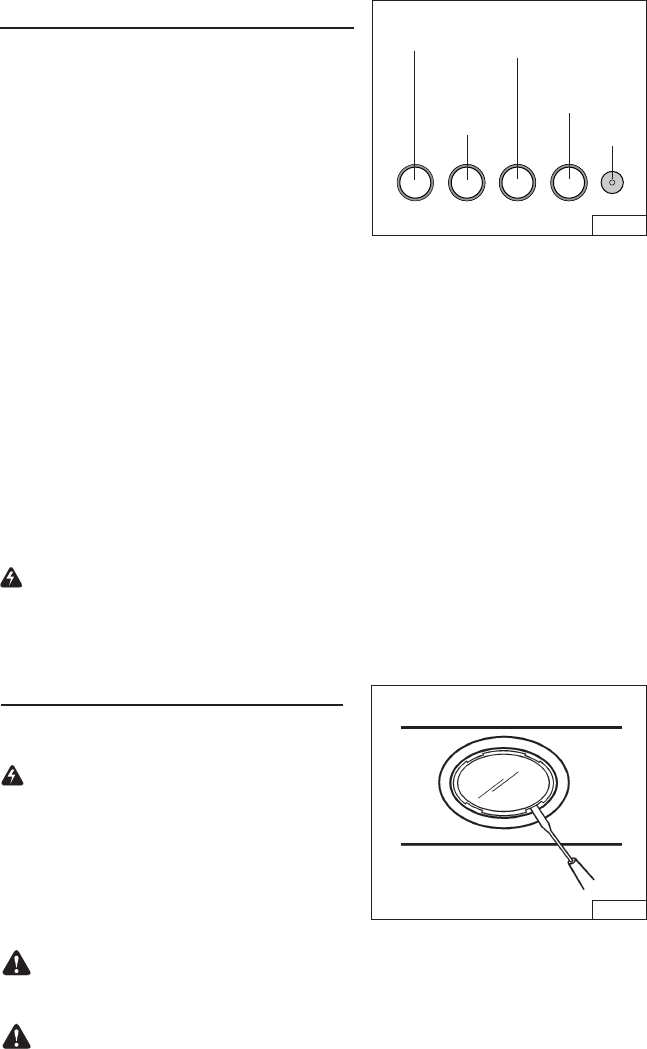
- 4 -
HALOGEN BULBS
This range hood requires two halogen bulbs
(Type T3, 12Volt, 20Watt Max, G-4 Base).
WARNING: Always switch off the elec-
trical supply before carrying out any op-
eration on the appliance.
To change bulbs:
1. Open the cover by prying from the proper
slots. Fig. 2.
2. Remove the bulb by pulling sideways.
(DO NOT ROTATE).
CAUTION: Bulb may be hot.
3. Replace with Type T3, 12Volt, 20 Watt Max, G-4 Base halogen bulb. Do not touch
replacement bulb with bare hands!
CAUTION: Use of bulbs greater than 20 watts will cause the fuse to open.
OPERATION
Controls
The hood is operated using the (4) push-but-
tons located at eye-level, on the front edge of
the hood.
The light switch turns the halogen lights on
and off.
The blower on-low / off switch turns the blower
on to its lowest running speed. The blower
must be turned on using this switch. Turn the
blower off by pressing this switch a second time.
The blower medium speed switch changes the blower speed to medium. This
switch works only if the blower is already running at low or high speed.
The blower high speed switch changes the blower speed to high. This switch works
only if the blower is already running at low or medium speed.
The pilot lamp lights up whenever the blower is on.
HEAT SENTRY™
Your hood is equipped with a HEAT SENTRY™ thermostat. This thermostat is a
device that will turn on or speed up the blower if it senses excessive heat above
the cooking surface.
1) If blower is OFF - it turns blower ON to HIGH speed.
2) If blower is ON at a lower speed setting - it turns blower up to HIGH speed.
When the temperature level drops to normal, the blower will return to its original
setting.
WARNING
The HEAT SENTRY thermostat can start the blower even if the hood is turned
OFF. When this occurs, it is impossible to turn the blower OFF with its switch.
If you must stop the blower, do it from the main electrical panel.
BLOWER
ON-LOW /
OFF
SWITCH
BLOWER
MEDIUM
SPEED
LIGHT
SWITCH
PILOT
LAMP
BLOWER
HIGH
SPEED
FIG. 1
FIG. 2


















